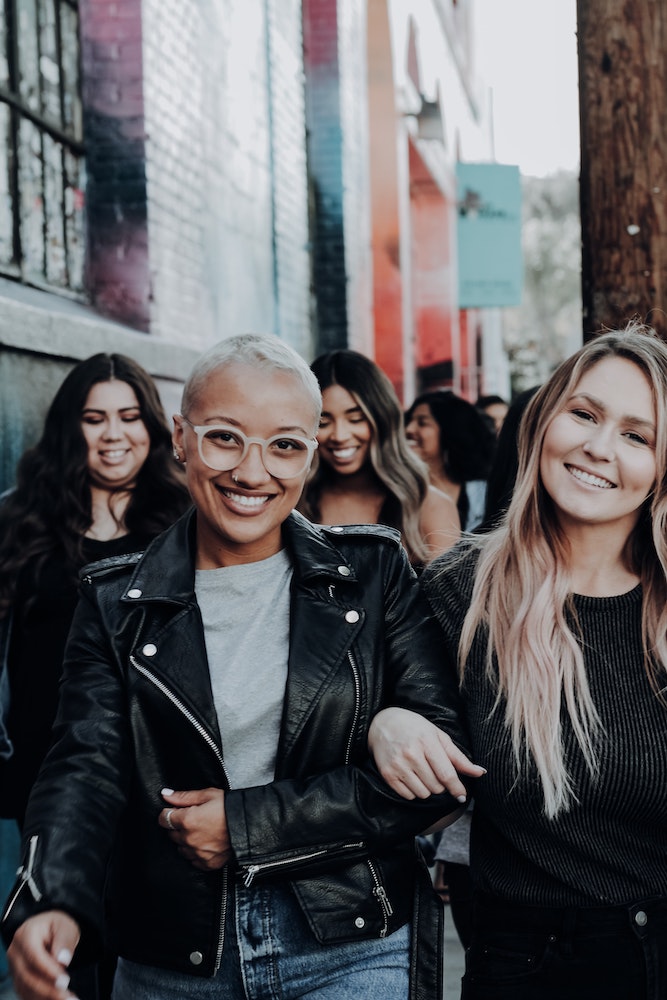Reduce Suicide Risk by Increasing Social Supports During COVID and Beyond

This article focuses on the topic of suicide prevention. If you or someone you know is considering suicide, immediately contact local crisis services or call the National Suicide Prevention Lifeline at 1-800-273-TALK (1-800-273-8255). For more tips on what you can to do to prevent suicides, visit familyaware.org/education/suicide-prevention/.
You’ll also note that we use the term “physical distancing” rather than “social distancing.” We made this change to underscore that separation between people’s bodies is necessary for minimizing virus transmission, but connectedness among people is necessary for their overall wellbeing.
Back in March, the orders for people to stay at home and limit contact due to the novel coronavirus caused immediate concern in the suicide prevention community. While the stay-at-home advisories have been essential for public health efforts to combat this pandemic, we knew that this disruption could trigger factors associated with increased suicide risk, such as
- isolation or feeling cut off from others
- access to substances at home
- access to lethal means (i.e., any instrument or object used to carry out a self-destructive act)
- job loss and insecurity
- unwillingness to get help due to stigma.

- people aged 19-24 years (25.5%)
- minority racial and ethnic groups (Hispanic respondents , non-Hispanic Black respondents )
- self-reported unpaid caregivers for adults (30.7%)
- essential workers (21.7%).
These numbers are alarming. However, in addition to becoming more aware about the risk of suicide, there are practical ways that family members, friends, and communities can increase protective factors to support ourselves and our loved ones. Fortunately, feelings of “connectedness” or social bonds are a leading evidence-based protective practice in suicide prevention.
Both for yourself and your loved ones, having strong and reliable social supports are essential for wellness. Here are seven strategies you can use to boost your support system during COVID and beyond.

Take five to ten minutes to write down a list of people you enjoy and haven’t been able to spend time with in the last month (or longer). Now pick one to three of the people on your list, reach out to them, and set up a time to talk over the phone, video chat, or meet up in a safe, physically-distanced setting if your community allows.

If you’re looking for in-person options, look for local volunteer opportunities in your area. Many food rescue organizations need in-person help to deliver necessary nourishment to community members. Not only will it feel good to meet new people, but you’ll also be making a huge difference in your community!

- Host a fire
- Start a book club
- Take a walk or ride bicycles
- Lead a group exercise or other way to move your body (yoga, pilates, Zumba, tai chi, etc.)
- Practice spirituality
- Try meditation or mindfulness together.


If you currently practice or want to reconnect with your spirituality, many religious and spiritual communities are offering services and events virtually. Some congregations are even delivering parking lot services!


You can also set up code words, items, or phrases with your family or friends to let them know you need help. Ever heard of the “blobfish”? One of our staff members lovingly refers to the days that she feels “off” as “blobfish” days. When she’s having a difficult day, she sends a picture of the blobfish to her trusted contacts and they know she needs a little extra support. Depending on the person, adding a little humor to the process can make it easier to reach out for help.
Consider how people from different aspects of your life can help you feel connected and supported, whether they are relatives, close friends, members of your faith community, co-workers, neighbors, friends of your loved one, or others. For many people, helping others helps them to feel well; you reaching out to others may be just what they needed, too! For yourself, when people ask how they can help, don’t be shy! We all need support from time to time and, when you accept their offer, you may be helping them feel connected and supported, too.

